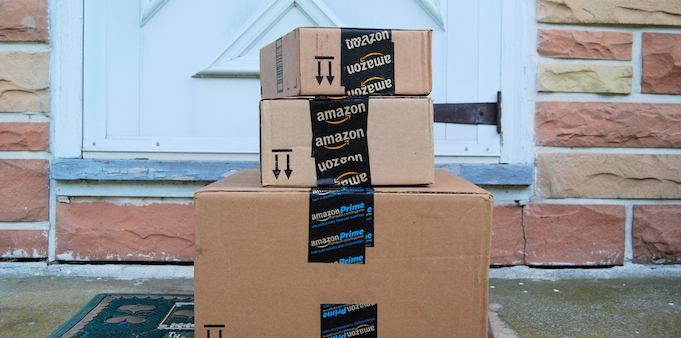
It may be one of the most powerful retail and logistics companies on Earth and a master of “last mile” logistics, but Amazon’s warehouses are about as organised as a teenager’s bedroom, according to reports.
This week Quartz went inside the chaotic world of Amazon’s storage facilities — places where the thousands of products on offer are literally stuffed wherever they fit on shelves.
“Items aren’t arranged by size, shipment date, or any other system,” Quartz reports.
Instead, huge shelving units are subdivided into smaller storage spaces. When a shipment of products comes in, the individual units are removed from the pallet and then stashed separately in one of the hundreds of small pigeon holes, waiting until an order is placed for them.
As a result, Oreos could be stored with vitamins or tinned tomatoes with toiletries. So how does that make for easier delivery?
There are a number of strategic advantages to this less-ordered approach, Quartz reports.
Each individually-divided shelf section has its own unique barcode and each product that comes into the warehouse has its location scanned and logged once placed on a shelf. This approach allows Amazon to keep track of all of its stock without being locked into using each area of the warehouse for one purpose only: for example, being forced to keep all the toothpaste up one end of the building.
“Indexing” items in this way can also help with the speed of picking and packing. It means the staff responsible for picking the products don’t have to travel to a specific shelf in order to find them. Instead, because the items are dispersed across the warehouse, there is a better chance that product will be on a shelf close to their physical location, removing the need to walk across tens of aisles to find it.
According to Quartz, Amazon says it tends to stock only a few units of an item at a time, meaning there is no need for a dedicated space for categories like toothpaste. And Amazon customers only tend to buy one unit of an item, so there’s no need to store things all together in bulk.
The system means the average Amazon order can be sent from the warehouse within around 75 minutes from when the order is placed. It also works perfectly for those sites that employ warehouse robots, where the average time between an order being placed and shipped is around 15 minutes. At these sites, the Amazon index system can work out where an item is located in a warehouse, and automated shelving units reportedly “bring themselves” to the picking and packing workers so that they can collect and post the stock.
NOW READ: How does Amazon Australia really stack up on delivery prices?


COMMENTS
SmartCompany is committed to hosting lively discussions. Help us keep the conversation useful, interesting and welcoming. We aim to publish comments quickly in the interest of promoting robust conversation, but we’re a small team and we deploy filters to protect against legal risk. Occasionally your comment may be held up while it is being reviewed, but we’re working as fast as we can to keep the conversation rolling.
The SmartCompany comment section is members-only content. Please subscribe to leave a comment.
The SmartCompany comment section is members-only content. Please login to leave a comment.